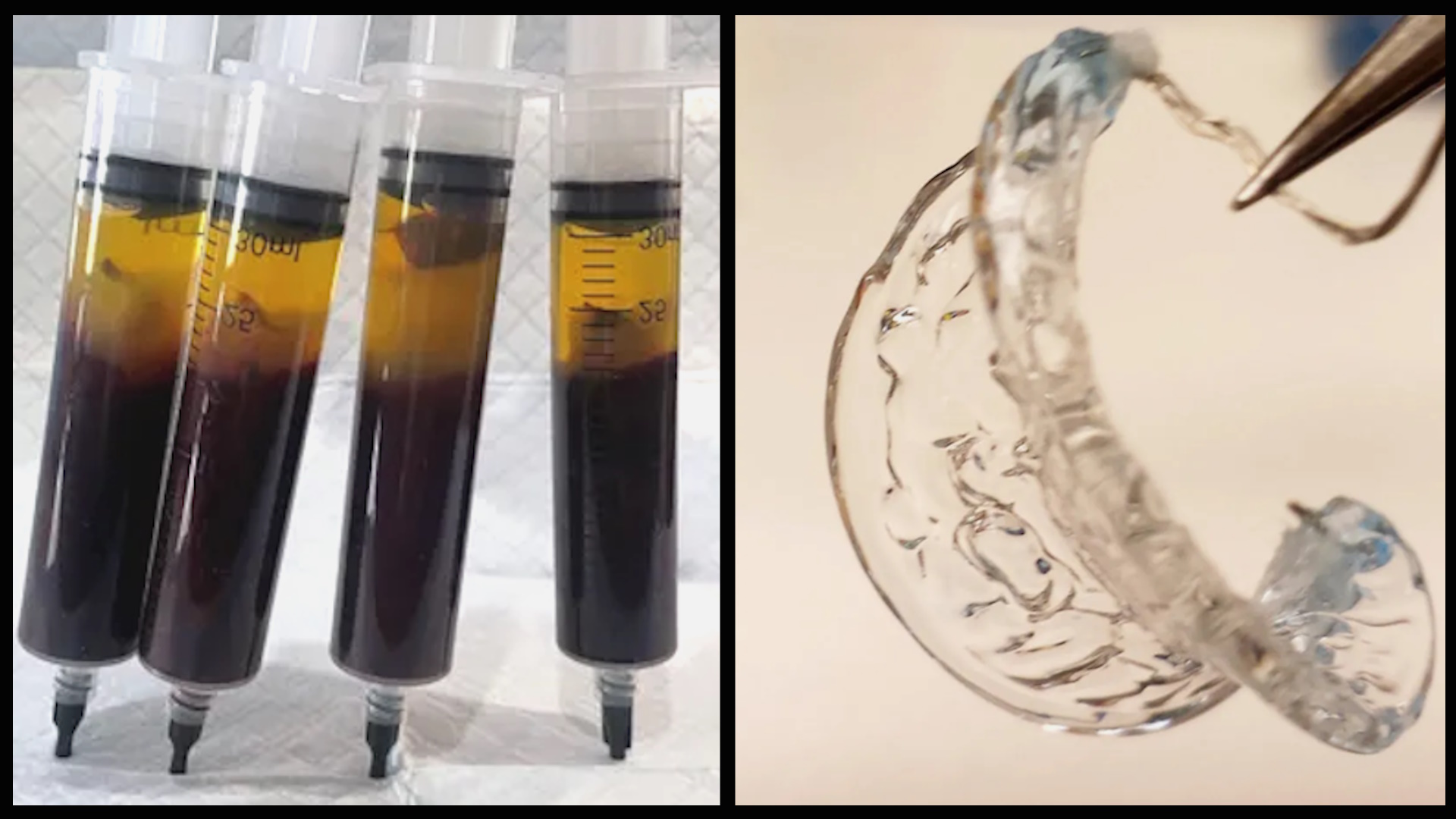
Self Assembly Hydrogel Polymers, Historical Research Context of Hydrogel Smart Materials and Nano Worms That Rapidly Grow From Nanometers to Visible Size
by Ana Maria Mihalcea, MD, PhD, Dr. Ana’s Newsletter
May 21, 2023
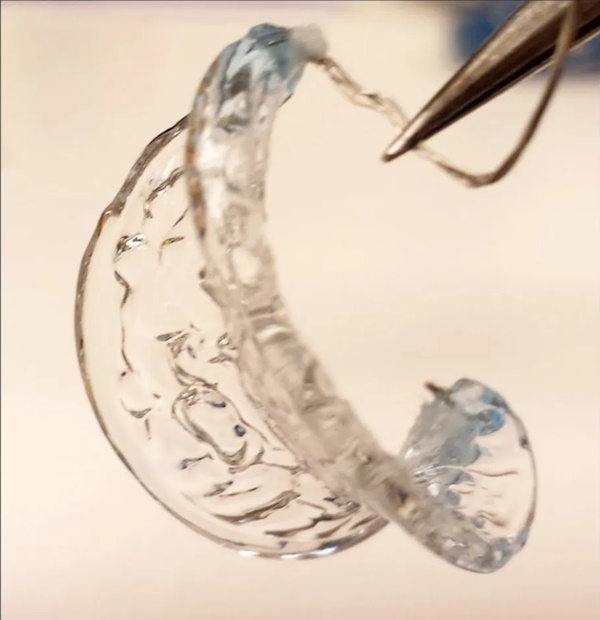
In this article, I wanted to explain more about Hydrogel. There have been scientists and doctors saying that you cannot see nanotechnology grow from nanoscale to microscopic scale and that we cannot possibly see what we claim to see in the blood.
Our latest research findings show however that we are seeing what we claim:
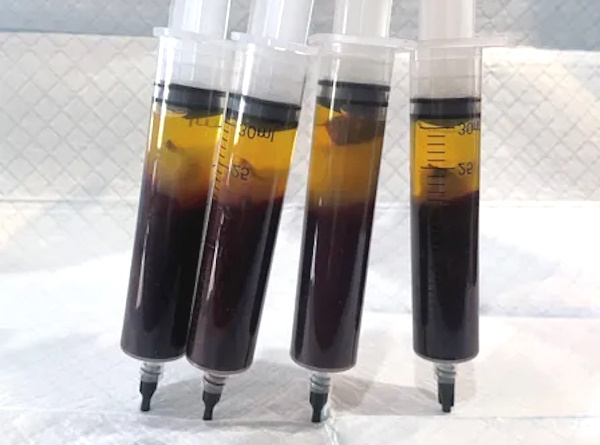
There are people who do live blood analysis who call the hydrogel containing filaments parasites, biofilm, other lifeforms explicable via terrain theory. They dismiss the filaments because they were seen before historically, so they cannot have anything to do with the C19 injections. These are incorrect claims and I wish to explain the scientific background here.
We have discussed extensively that the Transhumanist assault of synthetic biology has been going on for decades and that historically the same filaments have been found in people’s blood before the C19 injections – they were then called Morgellons or Cross Doman Bacteria (CDB) and sprayed via geoengineering and bioengineering for people to inhale and get sick. The symptom complex experienced by CDB/ Morgellons has enormous overlap to “long Covid” poisoning – including chronic fatigue, brain fog, multi organ dysfunction, accelerated aging, mood disorders and more.
In the image above, you can see hydrogel used to grow like a leaf. In the article below, it is discussed that hydrogels can grow like biological tissues and that oxygen tension can control the growth. The more oxygen there is the faster they grow. Normal blood is carrying oxygen. There are many more ways to control the growth, this is just one example:
Scientists make research hydrogel grow more like biological tissues
The team’s findings, published in Proceedings of the National Academy of Sciences today, suggest new applications in areas such as tissue engineering and soft robotics where hydrogel is commonly used. The team has also filed a patent at CMU and NTU. In nature, plant or animal tissues are formed as new biomass is added to existing structures. Their shape is the result of different parts of those tissues growing at different rates.
Mimicking this behaviour of biological tissues in nature, the research team comprising CMU scientists Changjin Huang, David Quinn, K. Jimmy Hsia and NTU President-designate Prof Subra Suresh, showed that through manipulation of oxygen concentration, one can pattern and control the growth rate of hydrogels to create the desired complex 3-D shapes. The team found that higher oxygen concentrations slow down the cross-linking of chemicals in the hydrogel, inhibiting growth in that specific area.
Hydrogel research has gone on for many decades. Here is an article from 1977 discussing the interactions of hydrogel and blood:
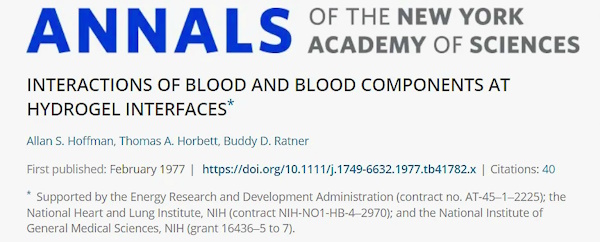
Interactions of Blood and Blood Components at Hydrogel Interfaces*
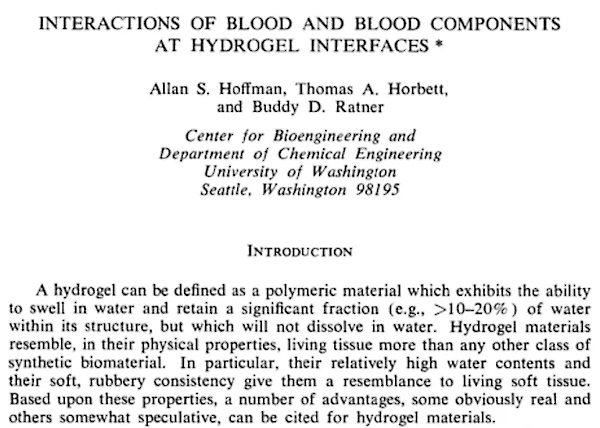
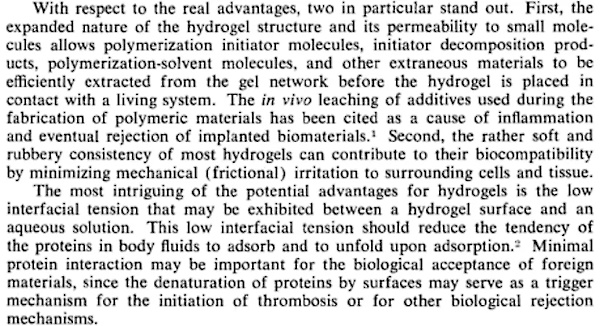
Here is an article explaining how fast the hydrogel can change its volume or size. What we have been seeing in human blood and in the analysis of C19 vials nanotechnology is entirely consistent with the literature.

Smart hydrogels, or stimuli-responsive hydrogels, are three-dimensional networks composed of crosslinked hydrophilic polymer chains that are able to dramatically change their volume and other properties in response to environmental stimuli such as temperature, pH and certain chemicals. Rapid and significant response to environmental stimuli and high elasticity are critical for the versatility of such smart hydrogels. Here we report the synthesis of smart hydrogels which are rapidly responsive, highly swellable and stretchable, by constructing a nano-structured architecture with activated nanogels as nano-crosslinkers.
You can control the growth of hydrogels by many different chemical means. Here is an article from 2001 – just to show how long the scientific community has worked on perfecting this technology:

Environment-sensitive hydrogels for drug delivery
Environmentally sensitive hydrogels have enormous potential in various applications. Some environmental variables, such as low pH and elevated temperatures, are found in the body. For this reason, either pH-sensitive and/or temperature-sensitive hydrogels can be used for site-specific controlled drug delivery. Hydrogels that are responsive to specific molecules, such as glucose or antigens, can be used as biosensors as well as drug delivery systems. Light-sensitive, pressure-responsive and electro-sensitive hydrogels also have the potential to be used in drug delivery and bio separation. Hydrogels containing such ‘sensor’ properties can undergo reversible volume phase transitions or gel–sol phase transitions upon only minute changes in the environmental condition. The types of environment-sensitive hydrogels are also called ‘Intelligent’ or ‘smart’ hydrogels. Many physical and chemical stimuli have been applied to induce various responses of the smart hydrogel systems. The physical stimuli include temperature, electric fields, solvent composition, light, pressure, sound and magnetic fields, while the chemical or biochemical stimuli include pH, ions and specific molecular recognition events. Smart hydrogels have been used in diverse applications, such as in making artificial muscles, chemical valves, immobilization of enzymes and cells , and concentrating dilute solutions in bioseparation.
The worm like appearance we are seeing in the blood is not a parasite but a self assembly polymer nano worm which has been developed by science for over 2 decades (thanks to Shimon Yanowitz for sending this to me):
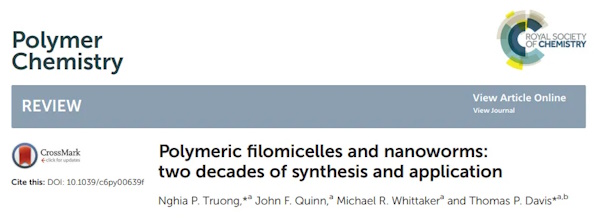
Filomicelles and nanoworms are an emerging subclass of nanomaterials with a special elongated shape. The physical properties of a filomicelle are distinct from a traditional spherical micelle, and as such have attracted tremendous interest in a variety of research areas. In this review, we highlight the substantial progress in the synthesis and application of polymeric nanoworms over the past two decades. Synthetic techniques summarized in this review are particle replication in nonwetting templates (PRINT), film stretching, self-assembly (SA), crystallization-driven self-assembly (CDSA), polymerization-induced selfassembly (PISA), and temperature-induced morphological transformation (TIMT). The applications of filomicelles as (i) templates for inorganic nanoparticles, (ii) building blocks for superstructures, (iii) synthetic dendritic cells for immunotherapy, (iv) constituents of thermoresponsive gels for biomedical applications, and (v) nanocarriers for cancer drug delivery are subsequently discussed. In the conclusion, we describe the current trajectory of research in the field and identify areas where further developments are of urgent need.
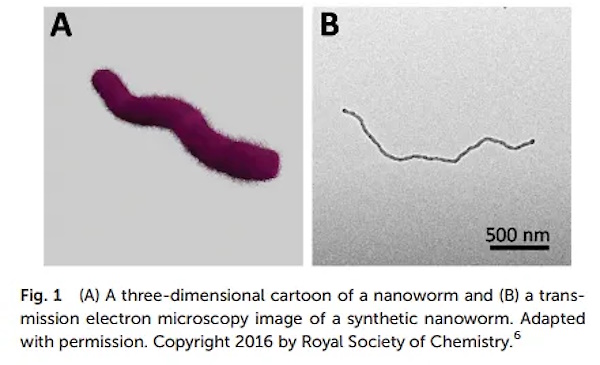
Note how the researchers consider self assembly as a “living” process.

Please note that these can grow from nanometer to macroscopic size, visible with the naked eye:

Metals are used to control hydrogel polymer properties. Hydrogels can induce growth stasis in human stem cells and embryos. Please see link here: Polymeric Filomicelles and Nanoworms: Two Decades of Synthesis and Application
Connect with Ana Maria Mihalcea, MD, PhD

Truth Comes to Light highlights writers and video creators who ask the difficult questions while sharing their unique insights and visions.
Everything posted on this site is done in the spirit of conversation. Please do your own research and trust yourself when reading and giving consideration to anything that appears here or anywhere else.










